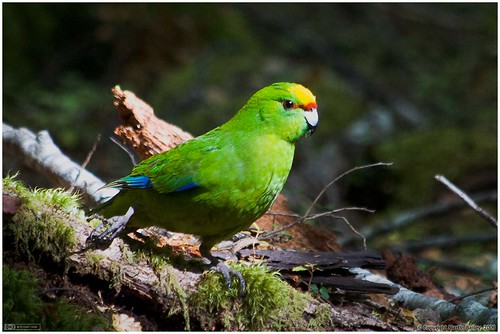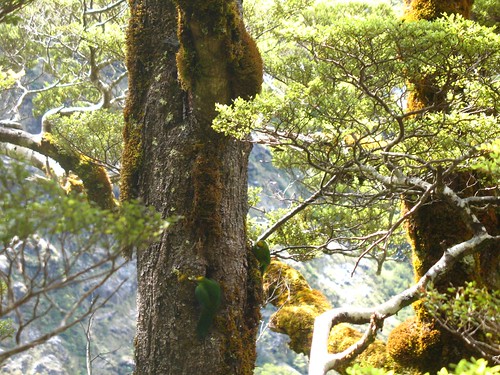 The Yellow-crowned Parakeet (Cyanoramphus auriceps) Image by MartinTwelve kakariki, or yellow-crowned parakeets, were flown from the Marlborough Sounds to Abel Tasman National Park in what is thought to be the first transfer to the wild of captive-raised members of the species.
The Yellow-crowned Parakeet (Cyanoramphus auriceps) Image by MartinTwelve kakariki, or yellow-crowned parakeets, were flown from the Marlborough Sounds to Abel Tasman National Park in what is thought to be the first transfer to the wild of captive-raised members of the species.
The birds were transferred by helicopter early yesterday afternoon from Lochmara Lodge and Wildlife Recovery Centre in Queen Charlotte Sound where they were bred from pairs originally from Long Island.
They were to be put into an aviary near Wainui Hut in the upper reaches of the Abel Tasman National Park yesterday evening, and will be released into the wild in about 11 days after acclimatising to their new environment.
Project Janszoon ornithologist Pete Gaze banded all the birds at Lochmara Lodge with a single white band before the transfer, so that people will from now on be able to tell what age they are. The birds transferred yesterday are expected to be the first of many, as the Project Janszoon staff work to repopulate Abel Tasman Park.
"There is a small and declining population of yellow-crowned parakeet or kakariki in the higher altitudes of the park. When they are released in about two weeks these 12 birds will be the first captive-raised kakariki to be released into the wild on mainland New Zealand," Gaze said.
 Yellow-crowned parakeet or kakariki in their natural habitat. Image by Antoine HubertThe birds were not grateful to have "bling" on their legs, nipping him sharply before they were put in the transfer boxes, three to a box, ready for the helicopter ride.
Yellow-crowned parakeet or kakariki in their natural habitat. Image by Antoine HubertThe birds were not grateful to have "bling" on their legs, nipping him sharply before they were put in the transfer boxes, three to a box, ready for the helicopter ride.
Gaze said the release was only possible because of predator control by Project Janszoon to provide a safe habitat for the birds, which usually nest in holes.
Project Janszoon is a privately funded trust named after the first European to discover New Zealand, Abel Janszoon Tasman. Over a 30-year timeframe it will work with the Department of Conservation, the Abel Tasman Birdsong Trust, the community and iwi to reduce predator numbers and weeds, restore ecosystems and re-introduce native birds, animals and plants in the Abel Tasman National Park.
Lochmara Lodge owner Shayne Olsen, the chairman of the Marlborough Sounds Wildlife Recovery Trust, said it was wonderful private organisations could be involved in public conservation.
"Working together, we can achieve a good result . . . next year, we'll do even more birds. When other people get in behind, we can make a big difference."
He said that with good food, nesting space and no pests, the kakariki could "breed like sparrows" with many chicks.
"If we can make Abel Tasman sound like Blumine or Motuara Islands, it will be amazing."
There were stories of people in Bainham, in Golden Bay, once having to scare flocks of kakariki away with a stick before being able to feed their chickens, and the team working with the kakariki transfer yesterday hoped it could be like that again one day.
The birds were farewelled from Lochmara Lodge by Te Atiawa kaumatua Graham Grennell and were to be welcomed to Abel Tasman National Park by a representative of Manawhenua ki Mohua, acknowledging their kaitiaki role to ensure that the new population was well-managed.